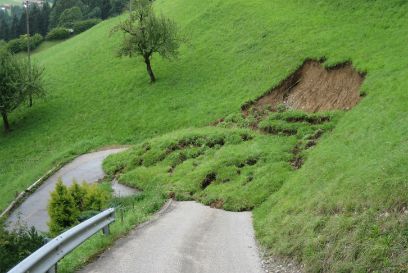Data-Rutsch: database for geomechanical data of shallow landslides
The joint project of BFH-HAFL and BFH-AHB aims to create a national database summarising geotechnical soil properties that can lead to shallow landslides.
Factsheet
- Lead school(s) School of Architecture, Wood and Civil Engineering
- Additional schools School of Agricultural, Forest and Food Sciences HAFL
- Institute Institute for Infrastructure and Environment IIU
- Duration (planned) 01.01.2023 - 31.12.2023
- Project management Dr. Massimiliano Schwarz
- Head of project Prof. Dr. Jean-Baptiste Payeur
-
Project staff
Femi Reshiti
Kim Fabian von Wattenwyl - Keywords Geotechnics, soil mechanics, landslides, laboratory
Initial situation
Shallow landslides are a common natural hazard in Switzerland. They cause considerable damage every year. [1]
For several years, HAFL’s Mountain Forest, Natural Hazards and GIS research team and AHB’s Geotechnics and Natural Hazards research team have studied these phenomena and have tried to explain their origin and propose safety solutions.
As part of a partnership between the two research teams, the Data-Rutsch research project aims to summarise landslide data obtained through laboratory experiments. Thus, statistical correlations between soil types involved in shallow landslides and their geomechanical properties will be determined.

Procedure
The collection and analysis of soil data from the archives of HAFL, AHB and private Swiss laboratories allows the construction of a database of soil samples. For these data, statistical analysis can be used to determine the mean values and standard deviations of mechanical properties (strong angle, cohesion, plastic properties, permeability, etc.) for soils involved in shallow landslides.
These correlations will be the subject of a scientific publication that will allow professionals to determine orders of magnitude of geomechanical parameters. Thus, they should be able to better understand shallow landslides.
Results
A first analysis of the available data allowed to validate the proposed procedure and to provide magnitudes of parameters that were not previously available in the literature [2, 3].
A number of private laboratories were also willing to provide their data to expand the database.
Outlook
In a second step, the analysis will be extended to all Swiss soils and can serve as a basis for updating the SN 670 010 standard [2], which shows correlations between geomechanical parameters and soil types.




